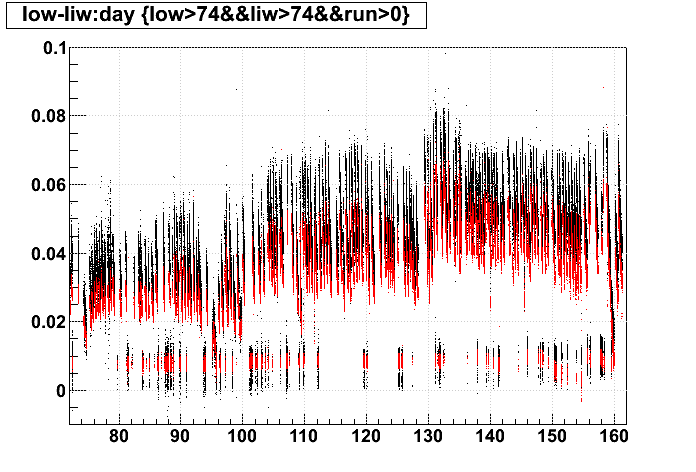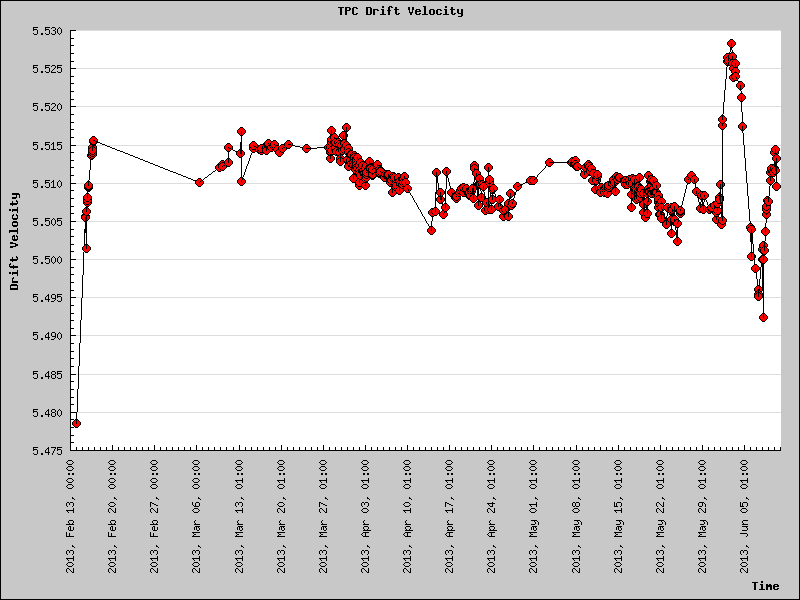- genevb's home page
- Posts
- 2025
- 2024
- 2023
- 2022
- September (1)
- 2021
- 2020
- 2019
- December (1)
- October (4)
- September (2)
- August (6)
- July (1)
- June (2)
- May (4)
- April (2)
- March (3)
- February (3)
- 2018
- 2017
- December (1)
- October (3)
- September (1)
- August (1)
- July (2)
- June (2)
- April (2)
- March (2)
- February (1)
- 2016
- November (2)
- September (1)
- August (2)
- July (1)
- June (2)
- May (2)
- April (1)
- March (5)
- February (2)
- January (1)
- 2015
- December (1)
- October (1)
- September (2)
- June (1)
- May (2)
- April (2)
- March (3)
- February (1)
- January (3)
- 2014
- December (2)
- October (2)
- September (2)
- August (3)
- July (2)
- June (2)
- May (2)
- April (9)
- March (2)
- February (2)
- January (1)
- 2013
- December (5)
- October (3)
- September (3)
- August (1)
- July (1)
- May (4)
- April (4)
- March (7)
- February (1)
- January (2)
- 2012
- December (2)
- November (6)
- October (2)
- September (3)
- August (7)
- July (2)
- June (1)
- May (3)
- April (1)
- March (2)
- February (1)
- 2011
- November (1)
- October (1)
- September (4)
- August (2)
- July (4)
- June (3)
- May (4)
- April (9)
- March (5)
- February (6)
- January (3)
- 2010
- December (3)
- November (6)
- October (3)
- September (1)
- August (5)
- July (1)
- June (4)
- May (1)
- April (2)
- March (2)
- February (4)
- January (2)
- 2009
- November (1)
- October (2)
- September (6)
- August (4)
- July (4)
- June (3)
- May (5)
- April (5)
- March (3)
- February (1)
- 2008
- 2005
- October (1)
- My blog
- Post new blog entry
- All blogs
Run 13 TPC Field Cage Currents
Updated on Thu, 2013-10-17 13:35. Originally created by genevb on 2013-09-05 12:47.
Here are some plots of TPC field cage currents [μAmps] from Run 13 vs. day, where blue points are during TPC runs, and red points are otherwise:

One can clearly see that there are luminosity dependent drops in the current, as has been observed and discussed previously. However, the magnitude of the drops was generally much larger this year (it was as much as 30 nAmps in Run 11, but was often between 50 and 100 nAmps in Run 13), and for portions of the data, immensely larger, as shown in the below plot of the IFC east current vs. time [hours, arbitrary zero] from fill 17533, for which the nominal current is ~76.46 μAmps, but 74.8 μAmps is seen, a drop of 1660 nAmps (2.17%)!!!

This huge drop was seen in all four field cages, as visibile in the above plot on day 141, along with other notably large drops in the the day 141-154 range. This first immense drop was reported at the TPC meeting on May 23, 2013 by Alexei.
And along with the large drops, this range of days also seems to have a higher nominal (zero-luminosity) current (visible as a distinct red band of non-run data at the top of the first set of plots), rising from ~76.425 μAmps up to ~76.46 μAmps, and again happening for all four field cages. Here are some specific examples of IFC east current vs. day for fills (17562 and 17569) demonstrating the varying nominal current by plotting not only the data from during the fill, but from just before it as well, with the cathode presumably on, but no colliding beams. In both cases, the current drops by ~80 nAmps when the beam turns on, but it is clear that before fill 17569, the nominal current is very low (by perhaps 200 nAmps) and rising.


These incidents of large current drops do not appear to be tied to particularly high luminosity occasions, as demonstrated by this plot of ZDC coincidence rate vs. day for runs with TPC:

____________
A more relevant metric of what could lead to possible distortions in the TPC is the difference between the outer and inner field cage currents, which can lead to radial components in the E field in the volume of the TPC. Here are the OFC - IFC (west and east) current differences vs. day for Run 13, and vs. time [hours, arbitrary zero] for fill 17533:


NB: West has a larger difference than east primarily because of the short in the OFC west, which increases its current.
Some observations from these difference plots::
_______________
Following up on the possibility of a cathode voltage drop, one might expect to see drift velocities drop by a perhaps 0.003 cm/us for a 2% drop in cathode voltage [Garfield calculations, which Yuri says are off by a scale factor in drift velocity (not E field) due to methane content]. Here are the drift velocities for Run 13, along with a zoom in near May 21, when fill 17533 occurred (from ~19:00 GMT until ~00:30 GMT just after midnight). The drift velocity should hypothetically slowly rise with a slowly rising cathode voltage, but there's no evidence of this during this period of time.


________________
Following up on the luminosity dependence of the drops in current...
I fit a first order polynomial to each field cage current as a function of zdcx, giving intercepts and slopes. The slopes are the dependence of the field cage current on luminosity as measured by the ZDCs. Here are the slopes [μAmps/Hz] for IFC east, IFC west, OFC east, and OFC west vs. day, binned in half days:

Now taking the differences of the slopes using (east - west) for inner and outer field cages, and ratio of the slopes (east / west), we see that something clearly happened around day 129 to alter the inner field cage currents.



One can clearly see that there are luminosity dependent drops in the current, as has been observed and discussed previously. However, the magnitude of the drops was generally much larger this year (it was as much as 30 nAmps in Run 11, but was often between 50 and 100 nAmps in Run 13), and for portions of the data, immensely larger, as shown in the below plot of the IFC east current vs. time [hours, arbitrary zero] from fill 17533, for which the nominal current is ~76.46 μAmps, but 74.8 μAmps is seen, a drop of 1660 nAmps (2.17%)!!!

This huge drop was seen in all four field cages, as visibile in the above plot on day 141, along with other notably large drops in the the day 141-154 range. This first immense drop was reported at the TPC meeting on May 23, 2013 by Alexei.
And along with the large drops, this range of days also seems to have a higher nominal (zero-luminosity) current (visible as a distinct red band of non-run data at the top of the first set of plots), rising from ~76.425 μAmps up to ~76.46 μAmps, and again happening for all four field cages. Here are some specific examples of IFC east current vs. day for fills (17562 and 17569) demonstrating the varying nominal current by plotting not only the data from during the fill, but from just before it as well, with the cathode presumably on, but no colliding beams. In both cases, the current drops by ~80 nAmps when the beam turns on, but it is clear that before fill 17569, the nominal current is very low (by perhaps 200 nAmps) and rising.


These incidents of large current drops do not appear to be tied to particularly high luminosity occasions, as demonstrated by this plot of ZDC coincidence rate vs. day for runs with TPC:

____________
A more relevant metric of what could lead to possible distortions in the TPC is the difference between the outer and inner field cage currents, which can lead to radial components in the E field in the volume of the TPC. Here are the OFC - IFC (west and east) current differences vs. day for Run 13, and vs. time [hours, arbitrary zero] for fill 17533:


NB: West has a larger difference than east primarily because of the short in the OFC west, which increases its current.
Some observations from these difference plots::
- Current differences in Run 13 are up to ~twice as large in Run 13 as they were in Run 11.
- The trends in current differences appear to follow the luminosity (ZDC coincidence rate) rather well.
- It appears that the immense current drops for fill 17533 do not translate into abnormally large current differences between the outer and inner field cages. Perhaps the immense current drop was due to a cathode voltage drop instead of the hypothesized current leakage due to ionization in the air outside the TPC??? A 2% drop in cathode voltage would be roughly half a kV!
- There are mild drops in the current differences every ~40 minutes. I believe these are due to some activity of C-AD that occurs every ~30-40 minutes, as some blips were also seen in RICH scalers.
- There is a second band in the west difference which is perhaps 8 nAmps lower than the main band. It appears to be from the OFC west (it's difficult to see unless a reference is subtracted to remove the primary time variations due to luminosity), but I see no obvious time pattern. Rather, it seems that a random ~10% of the measurements are in this second band. I have no theories other than the possibility that the short in the OFC west is no constant?!?
_______________
Following up on the possibility of a cathode voltage drop, one might expect to see drift velocities drop by a perhaps 0.003 cm/us for a 2% drop in cathode voltage [Garfield calculations, which Yuri says are off by a scale factor in drift velocity (not E field) due to methane content]. Here are the drift velocities for Run 13, along with a zoom in near May 21, when fill 17533 occurred (from ~19:00 GMT until ~00:30 GMT just after midnight). The drift velocity should hypothetically slowly rise with a slowly rising cathode voltage, but there's no evidence of this during this period of time.


________________
Following up on the luminosity dependence of the drops in current...
I fit a first order polynomial to each field cage current as a function of zdcx, giving intercepts and slopes. The slopes are the dependence of the field cage current on luminosity as measured by the ZDCs. Here are the slopes [μAmps/Hz] for IFC east, IFC west, OFC east, and OFC west vs. day, binned in half days:

Now taking the differences of the slopes using (east - west) for inner and outer field cages, and ratio of the slopes (east / west), we see that something clearly happened around day 129 to alter the inner field cage currents.


»
- genevb's blog
- Login or register to post comments
